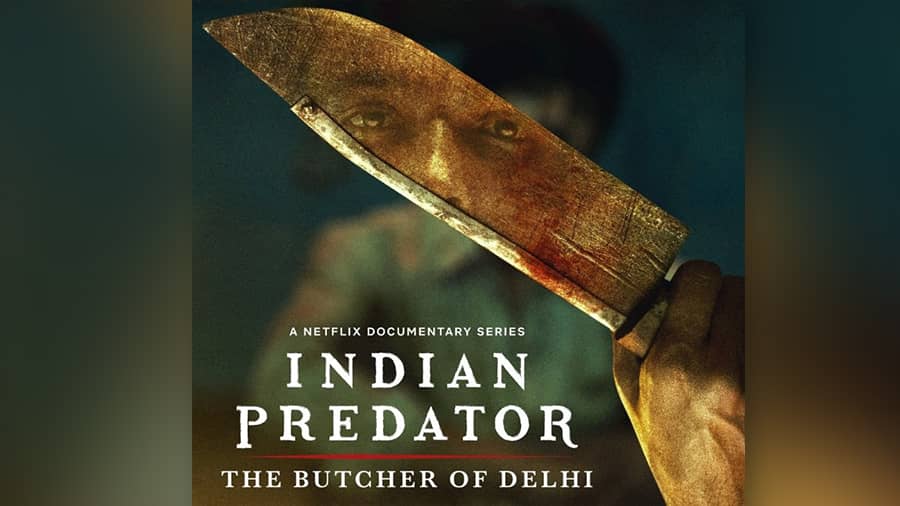Following the attention that Netflix’s Indian true crime documentary series House of Secrets: The Burari Deaths received in 2021, the OTT platform dropped a new spine-chilling docu-series on July 20. Indian Predator: The Butcher of Delhi, directed by Ayesha Sood, is the first in what will be a series on serial killers in India.
Over three episodes, The Butcher of Delhi explores the murders committed by Chandrakant Jha in Delhi between 2003 and 2007. While these incidents have been widely reported on, the docuseries offers unseen images and insights into the psychology of the criminal.
Chilling images straight out of the case files
Most true-crime docuseries depend heavily on recreations, and director Ayesha Sood adds real footage to the series to an unsettling effect. She uses realistic props that look like blood-soaked body parts scattered across the city.
What makes The Butcher of Delhi a stomach-churning watch is the way Sood splices images from the actual crime scenes with recreated crime scenes. The second episode of The Butcher of Delhi contains photos taken by the police of the skull they found on the banks of the Yamuna. Images of the victims before their death have also been incorporated. These photos were retrieved by the police from a camera that Chandrakant used to take pictures of his victims, tied up, before killing them.
A sensational crime thriller that plays out like a movie
The officers who investigated the case believe that Chandrakant wanted to create a narrative that shows the police in a poor light. Chandrakant kept dropping decapitated bodies in front of the Tihar Jail in New Delhi, along with letters. He would call the police and challenge them to catch him, just like the Zodiac killer in California, who had inspired the 2007 movie Zodiac starring Mark Ruffalo and Robert Downey Jr.
However, unlike the Zodiac killer who never got caught, Chandrakant was arrested and Sood creates a dramatic buildup leading to the police catching Chandrakant. Investigating officer, Surinder Singh Yadav, in the documentary, discusses how he and his team worked under a tight deadline in order to not have the case taken from them. This involved a chain of informants and a complex crackdown, which Sood uses as material to create the on-the-edge-of-the-seat feel as Chandrakant finally confesses the murders.
What the serial killer revealed also turns out to sound much like a movie narrative – how Chandrakant set off on a path of revenge against the police after being accused of a murder and abused by a constable in jail during his four years of imprisonment.
Spotlighting police brutality and mental health of migrant workers
The Butcher of Delhi raises questions about the harsh conditions that migrant workers have to suffer, which takes a toll on their mental health. Sood brings in clinical forensic scientist S.L. Vaya, who offers insights into the mind of Chandrakant, a native of Bihar who had migrated to Delhi for work. Vaya analyses his letters and phone calls to explore the motivation behind committing those crimes. The show also initiates a discussion around police brutality on prisoners in jails but leaves it open-ended.
Where is he now?
During his conviction in 2013, Chandrakant had been found guilty of three of the seven murders he was accused of, for which he received two death sentences and one life imprisonment. The death sentences were reduced to life imprisonment without remission in 2016. He requested parole in January 2022, which was rejected. Thus, he continues to serve his sentence in the Tihar Prison Complex in Delhi.










